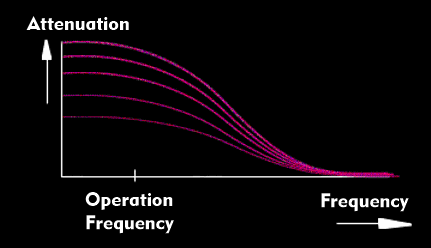shelving filter
The frequency response characteristic of shelving filters has the shape of a cow's tail, which is why it is also called a cow-tail filter in German.
Such filters are used in equalizers in the bass and treble ranges. Their effect starts slowly at the application frequency and increases dynamically until the end of the frequency range. The maximum attenuation is highest at the frequency of use, and the maximum gain is therefore lowest at this frequency and decreases (attenuation) or increases (gain) with frequency until the end of the frequency response.
Shelving filters can boost and cut frequencies. The boost or cut values refer to a frequency and are given in decibels ( dB). For example, a treble control might have a control range of +/- 12 dB starting at a frequency of 10 kHz, or a bass control might have the same at a frequency of 100 Hz. These are the maximum boosts or cuts at that frequency.

